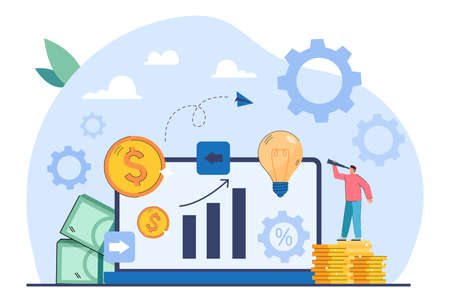Navigating Coffee Shop Licenses and Permits
Opening a trendy coffee shop in the U.S. is more than finding the perfect roast or designing an Instagram-worthy space. Before you serve your first espresso, you’ll need to secure the right licenses and permits to stay compliant and avoid costly fines. Here’s a practical overview of what you’ll need at the federal, state, and local levels, plus some tips on food safety, sales tax, and protecting your brand.
Federal Licensing Essentials
At the federal level, most independent coffee shops won’t require specific business licenses unless you plan to sell alcohol or operate across state lines. However, you must obtain an Employer Identification Number (EIN) from the IRS for tax purposes—even if you’re a sole proprietor. If you want to play music in your café, consider securing public performance rights through organizations like ASCAP or BMI.
Key Federal Requirements
| Requirement | Purpose | Where to Apply |
|---|---|---|
| EIN (Tax ID) | For hiring employees & filing taxes | IRS.gov |
| Music License (ASCAP/BMI) | Play copyrighted music legally | ASCAP.com / BMI.com |
State & Local Business Licenses
This is where it gets real—states and cities have their own requirements for food service businesses. You’ll typically need:
- A state business license or registration
- A local business operating permit
- A food service/food handler permit for your staff
- A health department inspection certificate
- A resale certificate to buy ingredients tax-free (if applicable)
Common State & Local Permits
| Permit/License | Description | Issued By |
|---|---|---|
| Business License | Legal permission to operate in your city/state | City or State Business Office |
| Food Service Permit | Ensures compliance with health codes | Local Health Department |
| Sales Tax Permit | Allows collection of sales tax on coffee/food sales | State Tax Authority |
| Resale Certificate | Purchase supplies without paying sales tax upfront | State Tax Authority |
| Zoning Permit | Makes sure location is approved for food service use | City Zoning Office |
| Coffee Shop Sign Permit | If you want signage outside your store | City Building Dept. |
| Fire Department Permit | Covers safety and fire code compliance (especially if roasting beans onsite) | Local Fire Department |
Food Handling & Safety Certifications
Your staff will likely need food handler certifications that show they understand safe food prep and storage practices. Requirements vary by state, but these are usually quick online courses followed by a simple test. In some areas, at least one manager needs a more advanced Food Protection Manager Certification.
Sales Tax Considerations for Coffee Shops
If you sell brewed coffee, pastries, or other food items, you’ll probably need to collect sales tax from customers and remit it to the state. Be sure to register with your state’s revenue office and keep detailed records. Some states exempt certain foods or beverages, so double-check what applies in your area.
Example: Sales Tax Registration Steps (California)
- Create an account at the California Department of Tax and Fee Administration website.
- Submit your business details and estimated sales volumes.
- You’ll receive a seller’s permit—post this in your shop.
- Add sales tax to applicable menu items when charging customers.
- File regular sales tax returns as required by state law.
Intellectual Property: Name, Logo, and Brand Protection
Your café’s name and logo set you apart—so protect them! Before printing menus or signs, check that your business name isn’t already taken in your state. Consider registering your trademark at the federal level via the USPTO to prevent others from using a similar brand nationwide. For logos and unique design elements, copyright protections may also apply.
Name Availability Checklist:
- Search your state’s Secretary of State business database for existing names.
- Check domain name availability for your website.
- If planning to expand nationally, search the USPTO trademark database.
- If available, register your name as both a legal entity and (optionally) as a trademark.
- Create branded social media accounts early!
Tackling licensing may sound intimidating at first—but once you break it down into steps, it’s just part of building a thriving coffee shop with peace of mind. In the next section, we’ll dive into design trends that can help make your café a neighborhood favorite in 2025.
Mastering Trendy Coffee Shop Design
Key Design Trends for 2025
When it comes to opening a trendy coffee shop in the US, design is everything. In 2025, coffee shop interiors are all about blending style with comfort, creating spaces that people want to visit—and post about on social media. Here are the top design trends you should know:
| Trend | Description |
|---|---|
| Instagram-Worthy Aesthetics | Think bold accent walls, statement lighting, and unique art installations that invite customers to snap and share their experience. |
| Sustainable Materials | Eco-friendly choices like reclaimed wood tables, recycled tiles, and natural fibers are in high demand among conscious consumers. |
| Flexible Layouts | Movable furniture and multi-use spaces allow for solo work, group hangouts, or community events—all in one spot. |
| Biophilic Design | Bring nature indoors with lots of greenery, living walls, and plenty of natural light for a calming vibe. |
| Personal Touches | Feature local artists’ work, custom murals, or region-inspired decor to give your shop a neighborhood feel. |
Creating Comfort and Community
Comfort goes beyond soft chairs—it’s about making everyone feel welcome. Use warm colors, plush seating options (think couches and armchairs), and cozy nooks for solo visitors. For groups, include larger tables or communal seating. Free Wi-Fi and plenty of outlets are must-haves for remote workers and students.
Community-Building Elements
- Event Space: Dedicate an area for open mic nights, book clubs, or art shows to attract locals.
- Beverage Customization Bar: Let customers personalize their drinks with syrups and toppings at a self-serve station.
- Loyalty Boards: Display regulars’ names or photos to build connections and encourage repeat visits.
Smart US Space Planning Strategies
Space is expensive—especially in popular American cities—so use every square foot wisely. Here are some functional layout ideas:
| Area | Purpose/Tip |
|---|---|
| Entry Zone | Create a welcoming entrance with clear signage and a display of pastries or merchandise. |
| Main Seating Area | Mix small tables with communal benches; keep pathways wide enough for accessibility. |
| Coffee Bar & Checkout | Keep lines moving by separating order and pickup zones; showcase brewing equipment as part of the decor. |
| Lounge/Work Zones | Add comfortable chairs near outlets; offer quiet corners for reading or working remotely. |
| Outdoor Patio (if possible) | Add umbrellas or heaters to extend year-round use; outdoor seating is always a hit in U.S. neighborhoods. |
Your Coffee Shop’s Visual Identity Matters
The right design not only attracts customers but keeps them coming back. Focus on what makes your brand unique—whether it’s funky wall art, local collaborations, or just really comfy seats. Make every corner photo-ready and every guest feel at home. That’s how you master trendy coffee shop design in 2025!

3. Sourcing the Best Coffee and Equipment
How to Build Relationships with Local U.S. Roasters and Suppliers
If you want your coffee shop to stand out in the U.S., connecting with local roasters and suppliers is essential. Start by visiting local coffee events, farmer’s markets, or joining industry groups like the Specialty Coffee Association (SCA). Don’t hesitate to reach out directly—many roasters love working with new shops that are passionate about quality. Set up tastings, ask questions about their sourcing practices, and be open about your vision for your coffee shop. Building a genuine relationship can also lead to better pricing, exclusive blends, and ongoing support as your business grows.
Balancing Quality with Costs
Great coffee doesn’t always have to break the bank. The key is to find the sweet spot where quality meets affordability. Here’s a simple comparison table to help you weigh your options:
| Coffee Source | Pros | Cons | Average Cost (per lb) |
|---|---|---|---|
| Local Artisan Roaster | Freshness, unique blends, community support | Higher prices, limited volume discounts | $12-$18 |
| Regional Distributor | Consistent supply, bulk pricing, broad selection | Less unique offerings, may lack transparency | $8-$14 |
| Direct Importer | Traceability, potential cost savings at scale | Complex logistics, higher minimum orders | $7-$13 |
Many trendy coffee shops use a mix: they feature a signature roast from a local partner but supplement with regional or direct-imported beans for high-volume drinks or cold brew. Always taste-test before committing and keep an eye on your margins as prices fluctuate.
Selecting Equipment That Meets Modern Customer Expectations
Your equipment choices shape both customer experience and daily operations. Today’s U.S. customers expect great-tasting drinks made efficiently—and often enjoy watching the barista work on cool gear. Here are some must-have equipment categories and what to look for:
| Equipment Type | What To Look For | Popular Brands (U.S.) |
|---|---|---|
| Espresso Machine | Consistency, temperature stability, easy maintenance, attractive design | La Marzocco, Synesso, Slayer |
| Coffee Grinder | Burr grinder (for uniformity), speed, easy adjustments for different beans/blends | Mazzer, Baratza, Mahlkönig |
| Brew Station/Pour-Over Gear | User-friendly design, precision controls for water temperature & flow rate | Chemex, Hario V60, Curtis Brewers |
| Cold Brew System | Large capacity, ease of cleaning, airtight storage for freshness | Toddy Cold Brew System, Brewista Cold Pro |
| Water Filtration System | Easily replaceable filters; improves taste & protects machines | Pentair Everpure, BWT Bestmax |
| POS System | Sleek interface; accepts contactless payments; integrates loyalty programs | Square, Toast POS |
Before making big purchases, visit other popular coffee shops in your area to see what equipment they use and ask about their experiences. Leasing can also be a smart option if you want to preserve cash flow while getting premium gear.
4. Marketing to Modern American Coffee Consumers
Digital and Grassroots Marketing Tactics for 2025
To attract today’s coffee-loving Americans, you need a mix of smart digital marketing and authentic grassroots efforts. In 2025, U.S. consumers expect more than just great coffee—they look for brands that connect online and in the community.
Key Digital Marketing Channels
| Channel | How to Use It | Why It Works in the US |
|---|---|---|
| Instagram & TikTok | Share short videos of latte art, behind-the-scenes moments, and new seasonal drinks. | Americans love visuals and trends—these platforms are where they discover new spots. |
| Email Newsletters | Send out weekly updates about events, specials, and loyalty rewards. | Email is still king for keeping local customers informed and engaged. |
| Google Business Profile | Update hours, photos, and respond to reviews regularly. | Most people search “coffee near me” before visiting—this builds trust fast. |
| Local Influencers | Invite micro-influencers for free tastings or “soft openings.” | Their followers are often your ideal target market within your city or neighborhood. |
Grassroots Strategies That Build Community Loyalty
- Host Local Events: Open-mic nights, trivia, or art shows can turn occasional visitors into regulars.
- Partner with Neighborhood Businesses: Cross-promote with yoga studios or bookstores for mutual exposure.
- Sponsor Community Causes: Support local charities or environmental projects—it shows you care beyond profits.
Loyalty Programs: Turning Sippers into Superfans
Loyalty programs are a staple in U.S. coffee culture. Customers expect to be rewarded for repeat visits. Here’s how to make yours stand out:
| Loyalty Program Idea | Description | Cultural Relevance in 2025 |
|---|---|---|
| Mobile App Rewards | Customers collect points per purchase; redeem for free drinks or snacks. | Convenience matters—Americans use their phones for everything. |
| Sustainable Choices Bonus | Extra points for bringing reusable cups or choosing plant-based options. | Sustainability is huge; it aligns with eco-conscious values trending in the US. |
| Birthday Perks & Surprise Offers | Email exclusive treats on birthdays or after a set number of visits. | A personalized touch makes guests feel special and keeps them coming back. |
Coffee Shop Branding Insights for American Consumers in 2025
Create an Insta-Worthy Space and Story
- Aesthetic Matters: Americans love sharing cool spaces online. Invest in unique décor, natural lighting, and creative signage that invites selfies and posts.
- Your Origin Story: Share your shop’s journey—how it started, your passion for coffee, and what sets you apart. Put this story on your website, menu, and social media bios. People connect with authenticity.
- Diverse Menus: Offer plant-based milk options, seasonal specials, and cater to dietary preferences. This inclusivity resonates well with modern U.S. audiences.
Your Brand Voice: Friendly & Approachable Wins Hearts
Your tone should be warm, inviting, and a little playful—think of your favorite barista who remembers your name. Avoid being too corporate; instead, speak like a neighbor welcoming folks in for their daily cup. Consistent branding across your digital channels and in-store experience builds trust and recognition among American consumers who value authenticity above all else.
5. Maximizing Profitability and Sustainable Growth
Smart Financial Planning for Coffee Shop Owners
Setting up a trendy coffee shop in the US is exciting, but to thrive, you need a solid financial plan. Start with a detailed budget that covers everything from rent and equipment to marketing and payroll. Keep an eye on your cash flow—track money coming in and out every week. Consider working with a local accountant or using user-friendly accounting software like QuickBooks or Xero to stay organized.
Sample Monthly Budget Breakdown
| Expense Category | Estimated Monthly Cost |
|---|---|
| Rent & Utilities | $3,000 |
| Payroll | $7,500 |
| Coffee & Supplies | $2,500 |
| Marketing & Advertising | $800 |
| Maintenance & Repairs | $400 |
| Miscellaneous | $300 |
| Total Estimated Expenses | $14,500 |
Effective Cost Control Tactics
Managing costs is crucial for profitability. Negotiate with suppliers for better rates or consider joining a coffee shop buying group. Reduce waste by training staff to make precise orders and portion sizes. Monitor utilities—energy-saving appliances and LED lighting help lower your bills. Always review your expenses monthly to spot areas where you can save.
Top Cost-Saving Tips:
- Buy ingredients in bulk when possible.
- Use digital menus to avoid printing costs.
- Cross-train staff to cover multiple roles.
- Offer seasonal drinks using local ingredients for lower sourcing costs.
Menu Pricing Strategies That Work in the US Market
Your menu prices should reflect your costs, target market, and competition. Research what other popular coffee shops charge in your area. Use psychological pricing (like $4.95 instead of $5) to make items seem more affordable. Don’t forget to factor in labor and overhead when setting prices for each item.
Coffee Drink Menu Example with Pricing Strategy:
| Beverage Item | Your Cost (per cup) | Selling Price (per cup) | Gross Profit (per cup) |
|---|---|---|---|
| Cappuccino 12oz | $1.20 | $4.25 | $3.05 |
| Iced Latte 16oz | $1.50 | $5.00 | $3.50 |
| Cold Brew 16oz | $1.10 | $4.75 | $3.65 |
Future-Proofing Your Coffee Shop Business: Winning Strategies for 2025 and Beyond
The US coffee shop scene is fast-paced and ever-changing. To stay ahead:
- Embrace Technology: Use mobile ordering apps, contactless payments, and loyalty programs to attract tech-savvy customers.
- Diversify Your Offerings: Add plant-based milks, gluten-free pastries, and unique signature drinks to appeal to broader tastes.
- Sustainability Matters: Offer reusable cup discounts, source ethically traded coffee beans, and cut down on single-use plastics.
- Create Community: Host open mic nights, art shows, or coffee-tasting events to build loyal regulars.
Checklist for Sustainable Growth:
- Update your menu every season based on customer feedback.
- Train your team regularly on new trends and customer service skills.
- Review financials monthly and adjust strategies as needed.
A well-run coffee shop combines smart planning, tight cost control, strategic pricing, and forward-thinking ideas to stand out—and profit—in the competitive US market.


